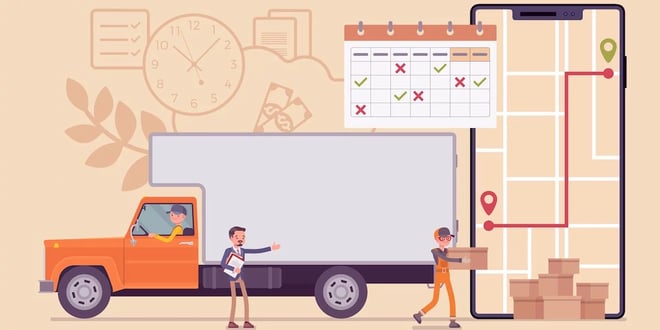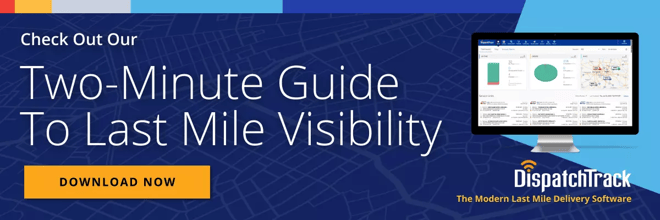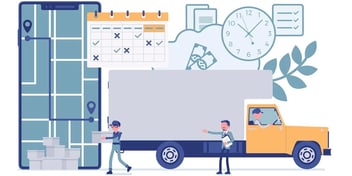Practically all businesses make customer retention a priority. After all, how can any enterprise survive without its loyal customers? But with third-party logistics (3PL) companies, customer retention is often one of the most significant challenges being faced right now. Even as the demand for logistics services in many areas increases, customer expectations are more lofty than ever, and it can be difficult to meet their demands consistently.

Luckily, there are tactics that 3PLs can employ to delight their customers and ultimately improve their retention rates.
Understanding Why Customers Switch 3PLs
Building solid relationships with clients is a must, and at the end of the day all business relationships are built on trust. Most shippers are quick to look for alternatives and opt to go with a different 3PL when that trust is lacking. Here are some factors that can erode trust and prompt clients to take their business elsewhere:
- Unfulfilled promises: Simply put, clients will churn if you constantly make commitments but fail to keep them. This might mean constantly promising delivery windows that can't be attained, or promising capacity that they don’t have. Some businesses will sign off on SLAs that are unattainable either to win business or keep current clients on board. However, failing to keep commitment comes with negative consequences both for the 3PL and the customer involved.
- Lack of communication: 3PLs that fail to communicate frequently and openly risk losing customers' loyalty. Clients, after all, are trusting you to carry their brand into the last mile, and they want to be sure that things are going right at every step of the way.
- Lack of attention: You might think that you are paying the right amount of attention when customers, in fact, feel the opposite. Ultimately, this is why the ability to provide strong customer support is so crucial to customer retention.
- Slow business processes: Clients' patience will reach their limits when 3PLs seem too slow in responding to their issues. Businesses will look for another logistics partner if they perceive that their current 3PLs either seem to have a lack of sense of urgency or have too many internal bureaucratic processes.
Based on all the above, the typical 3PL client might sound incredibly high maintenance. But, in point of fact, they’re asking for levels of service that you can easily provide—if you have the right tools.
How to Retain Customers
It's always harder to acquire new customers than to retain existing ones regardless of one's industry. That’s why it’s always smart to find ways to add value so current customers don't leave and go to competitors.
Here's how logistics providers can ensure customers' loyalty.
Be a Customer-Centric Enterprise
Outstanding customer service will help businesses, including 3PLs, hold on to their clients. Remember that clients who feel that their needs are not being attended to will likely look for another organization that will give them the attention they need.

One of the ways to become more attuned with customers' needs is to properly train employees on the customer service process. A 3PL may boast of the most advanced 3PL systems, but whatever gains one has from investing in the right solutions will go to waste if employees aren’t trained on how to provide the best customer service. Below are the key aspects to be included in the training of employees.
- Providing customer with regular updates
- Following up with customers through phone calls or emails promptly
- Making sure that clients get real-time information on their shipments or inventory
- Addressing mistakes or inaccuracies as soon as possible
Employees must be trained on how to respond to customer concerns and inquiries as soon as possible. Sending clients accurate information proactively will make them feel that the company is going beyond what is expected of them. This, in turn, increases customer satisfaction.
Of course, to make this happen, your customer service reps need to be able to gather information (e.g. live order statuses in the field, order exceptions, and more) in real-time. This requires technology that prioritizes real-time visibility.
Provide Open Communication
3PL companies are contracted to help ensure that businesses are operating smoothly and efficiently. Enterprises engage the services of 3PLs so they can focus on their core competencies. This means many enterprises are heavily dependent on their 3PLs to operate smoothly and expect their logistics providers to communicate with them about any potential problems.
So what does proactive last mile communication look like? It can start by proactively providing the following information regularly.
- Order updates
- Available inventory
- Shipment tracking information
Aside from regular updates, 3PL firms must also relay to their customers quickly any issues that can potentially impact the client's operations or brand image. Logistics providers should not wait till the last minute before communicating to their customers that an issue or a problem could potentially hurt them.

Your clients expect angry calls from consignees whenever something goes wrong on your end, which means they need a way to stay out in front of any situation that arises. If they have to call you to find out what the problem is, they’re going to be annoyed. If, on the other hand, you’ve already given them the information they need—or, better yet, communicated so effectively with the consignee that they don’t need to make an angry phone call at all—you can truly delight your customers.
Invest in the Right Technological Solutions and Tools
As you might have gathered from the above, 3PLs with outdated technology will have a hard time satisfying their clients—especially since many competitors have already adopted new solutions and tools to eliminate operational inefficiencies.
Simply put, your clients want you to provide comprehensive last mile optimization—from the time you receive an order to the moment you send out invoices for a completed delivery, and all the touchpoints in between. This puts a lot of pressure on your technology to provide automation, optimization, and visibility wherever possible, whether that’s in planning and monitoring routes or generating carrier and driver settlements.
3PLs must take these steps to ensure technological inefficiencies won't cause client churn:
- Periodically review current systems to check if they are still effective
- Be abreast of new technologies that can provide both the company and its clients' competitive advantage
- Train employees effectively on software systems to minimize human errors
- Test and evaluate a prospective solution before buying it
3PLs are facing more stiff competition than ever, and their clients face tougher business environments. Logistics providers need to work harder to help their clients achieve their business goals by being truly customer-centric and ensuring effective and open communication. This means that having the right tools and solutions is an absolute necessity.






